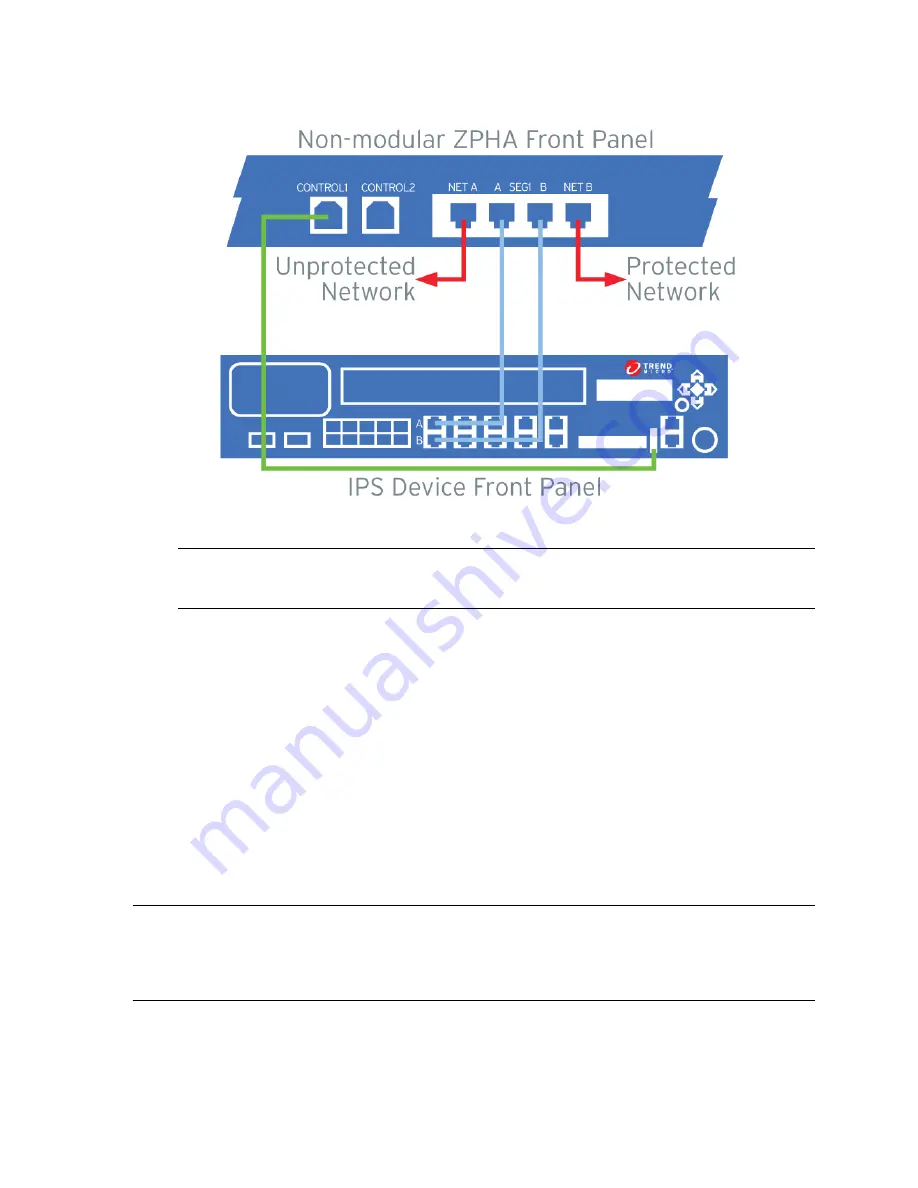
12
Figure 2-12
Non-modular ZPHA device to IPS connection diagram
NOTE:
You must connect all cables according to segment. All IPS or TPS device segment
ports should be connected to the ports of one segment on the ZPHA device.
4.
After you confirm that traffic is passing through the ZPHA device, turn on the IPS/TPS device.
5.
When the IPS/TPS device has completed booting, connect the nonstandard USB cable from the
IPS/TPS device to the ZPHA device. The ZPHA device receives power, lighting the Status LED
green.
WARNING!
Do not connect the USB cable until the IPS/TPS device is completely turned
on. If you connect the USB cable before you turn on the device, network traffic halts until
the IPS/TPS device is fully operational.
Daisy-chain configuration
Use a daisy-chain configuration to connect multiple ZPHA devices to a single IPS or TPS device. A
daisy-chain setup might be necessary if you need ZPHA device protection for more than five
segments on one IPS/TPS device. If you use ZPHA devices with a combination of copper and fiber
ports, the ZPHA devices must be connected to the IPS/TPS device in a particular order.
IMPORTANT:
Because of the energy consumption of fiber module segments, modular ZPHA
devices with fiber modules must be installed first in the daisy chain. If both ZPHA devices use only
copper ports or both use only fiber ports, then the order of the devices in the daisy chain does not
matter.
To daisy chain two ZPHA devices to a single IPS or TPS device:
1.
Connect the nonstandard USB power cable from the IPS/TPS device to the first ZPHA device.
2.
Connect another nonstandard USB power cable from the first ZPHA device to the second ZPHA
device.


































